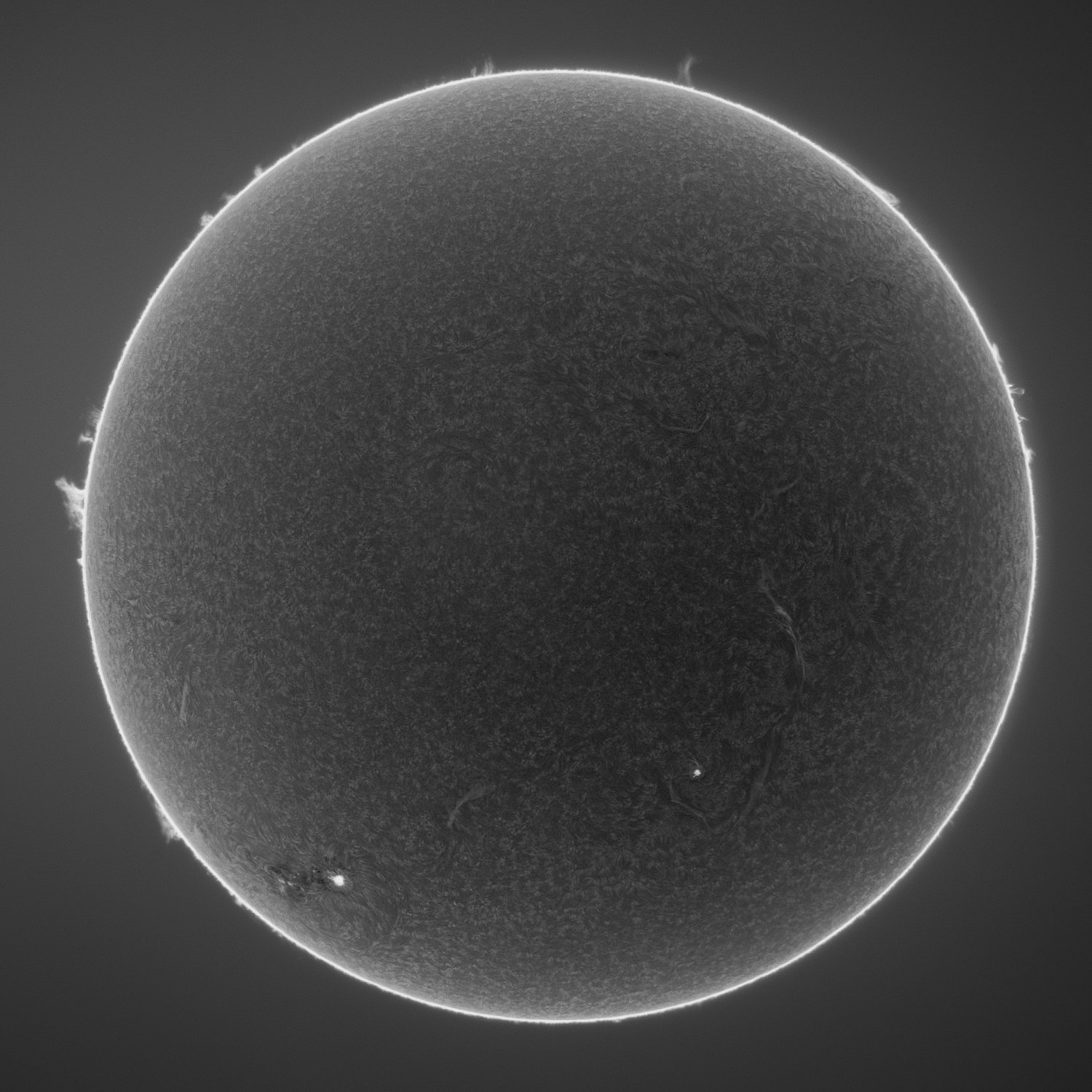It puts out every in the spectrums we can and can't see. This was taken with a mono sensor and through a very strong set of filters so there wasn't really any color data to be had. That being said a lot of folks will add that classic orange hue that you see. I decided to stick to white.
the0josh
joined 1 year ago
Ha filter: yes, I used the Lunt60 which has two different filters, a tunable elaton that hones in on a particular wavelength, and another more broad filter that rejects the rest of the energy.
10% images: the general term is "Lucky Imaging" but imaging things through the atmosphere is subject to seeing, or that shimmery effect above the ground on a hot day. The air is moving so it turns the atmosphere into what looks like looking at the bottom of a lake while ripples pass by, hence rejecting so much data
AutoStakkert does some magic with multiple exposures that I still don't quite grasp yet.
My telescope is 60mm diameter, f/7, for a focal length of 420mm.

It was definitely night for somebody on the other side of the world :)